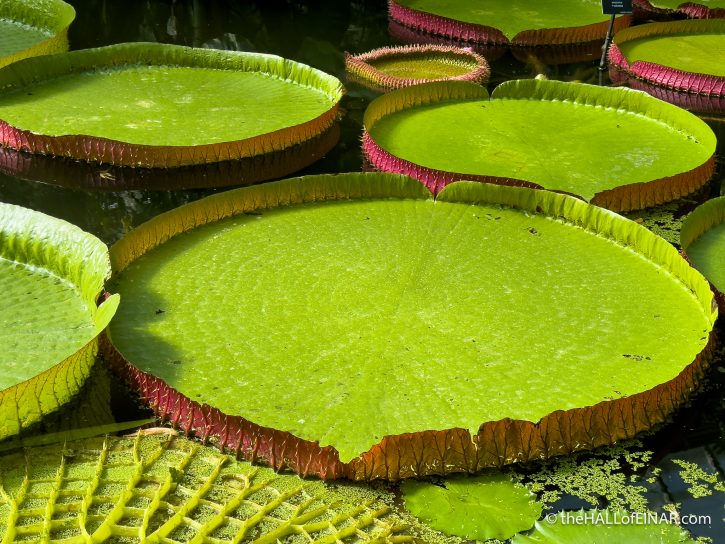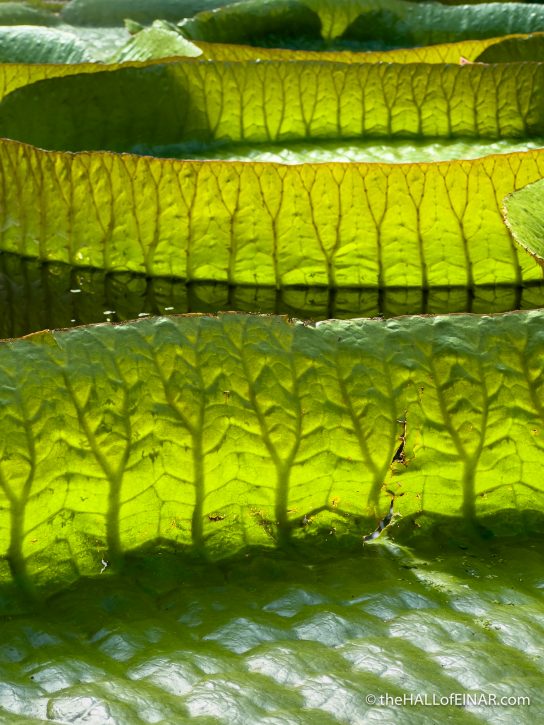Victoria amazonica
Giant Waterlilies are so fabulous that Kew Gardens built a Waterlily House just to house them. I like the way that Kew details that their leaves “can reach up to three metres wide and support the weight of a small child”. Does anyone have a small child available so we can check? How small would the child have to be? Would the child have to stay still? Strike a particular pose? Stay on all fours? Be able to breakdance and still not drown?
I think we should be told, which in today’s language means being illustrated by large numbers of TikTok challenges of desperate, attention-seeking parents willing to drown their child for likes.

I’m also enjoying the contrast of the tiny leaves of the pondweed floating alongside the giant leaves. The waterlily leaves having drainage channels, and their drainage cleft is also a very cool feature. So is the tracery of the structured pattern on the underside of the leaves, which must help with stability.
In its native Brazil, the Giant Waterlily is called Uape Jacana, which means the Lilytrotter’s Waterlily. A Jacana is a bird with massively elongated toes, which allow it to walk on floating vegetation. I wonder if the small child would need similarly elongated toes to be able to trot on it?
The way in which the tracery reaches up the vertical sides of the leaves in a tree-like pattern is beautiful in this light. I was going to say it was ‘dendritic’, but that’s a bit unnecessarily pompous, isn’t it?

Giant Waterlilies. Worth building a house for.